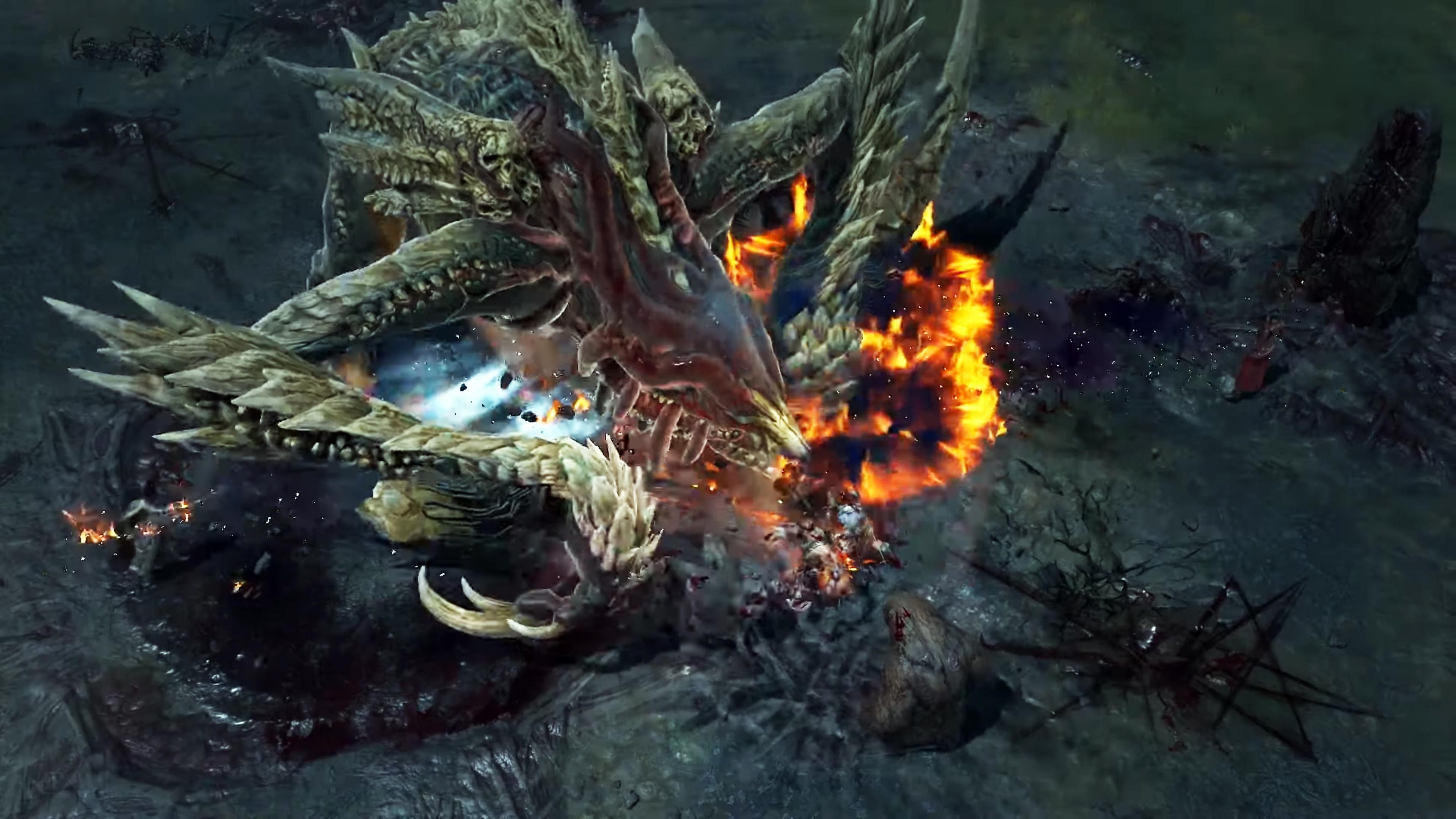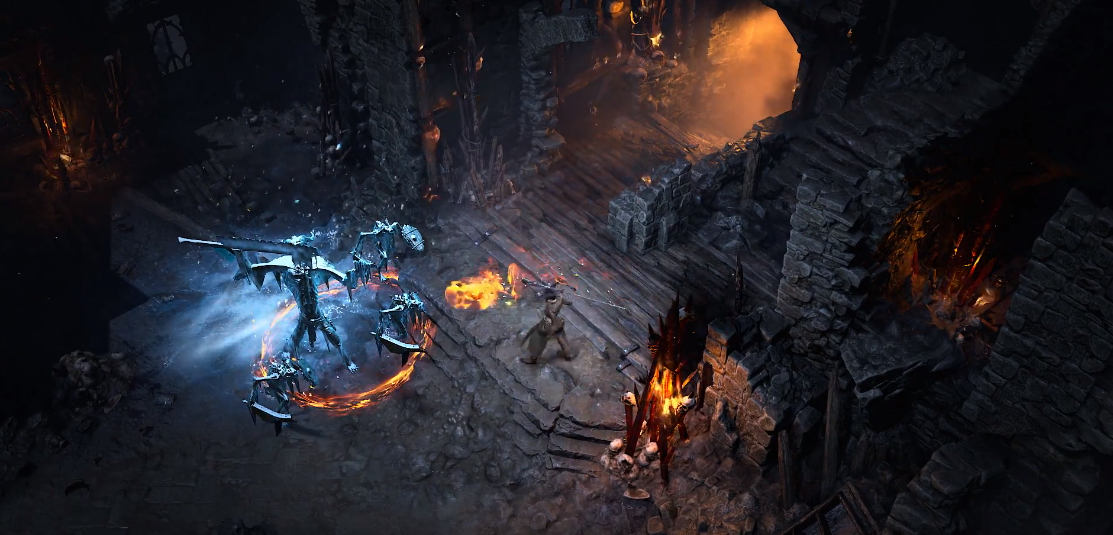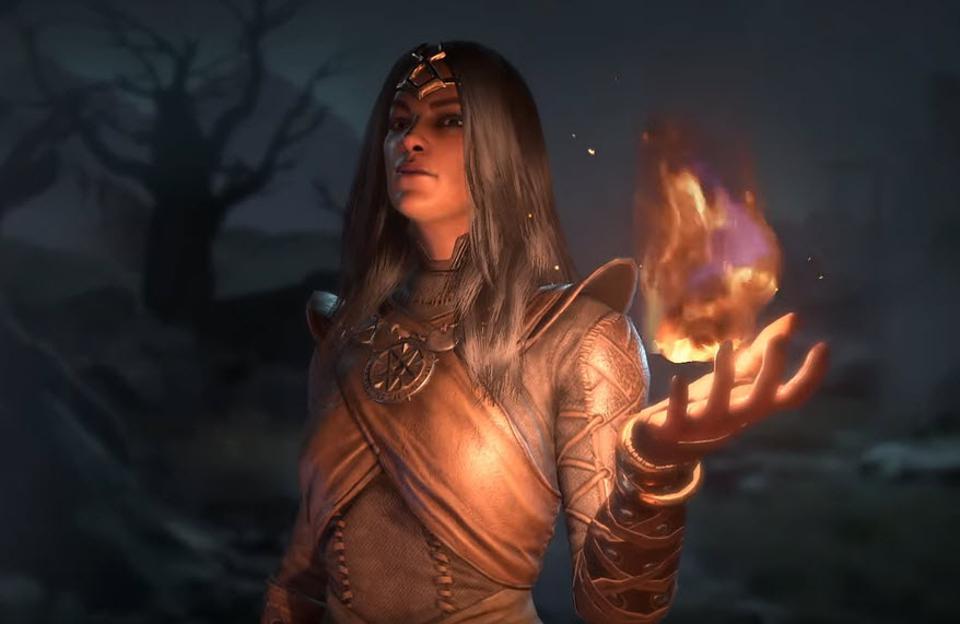

The game utilizes a shared world system where groups may encounter one another, engaging in both PvE (PvM) and PvP activities. The game can be played solo or in a group. PvP zones feature where players can battle against each other. The player character's armor is carried over to these scenes. These cutscenes are reserved for the most important story moments. Here, the camera is used to treat the storytelling as being akin to a movie. The second storytelling method used is real-time cutscenes.

For more complex conversations, the game takes a similar camera approach but here the character’s movements and animations are more deliberately hand-crafted. This is designed to maintain an isometric feel, but a library of animations are used to deliver the gist of the conversation. For simple interactions with NPCs, the game brings the camera in closer to the characters. NPCs are featured in the game, both friendly and unfriendly ones. The Tree of Whispers is an end-game system. Monster designs are based on "families" of disparate, yet thematically-linked creatures which work well together. Randomized and Keyed Dungeons are featured in the game. The game has a day-night cycle and dynamic weather effects. The Paragon Board features, replacing the Paragon system from previous games. Towns may become social hubs for a player once key story elements have been completed. While the game has shared-world elements, it is not an MMO. The open-world is fixed, and not randomized. Each of these areas will be 10–20 times larger than even the largest areas in Diablo III.

World Bosses are encountered in the open-world areas. Players will be able to use mounts to traverse across long distances. These are Kehjistan (specifically its northern desert region), Scosglen, the Dry Steppes, the Fractured Peaks, and the swamplands of Hawezar. But what fate awaits them in a land forsaken by hope, valor, wisdom, and justice? Gameplayĭiablo IV utilizes an open world structure with five unique regions. Unstoppable Evil: As darkness returns to Sanctuary, a brave few dare to face this threat. Profound fears, unchecked rage, repressed impulses, sinful desires-all are brought forth violently and irresistibly by her mere presence. Lilith's return has spawned a new wave of cultists and worshippers, but regardless of dogma, all prayers remain unanswered.ĭaughter of Hatred: The daughter of Mephisto awakens burning urges in the hearts of those around her, be it demon, human or beast. Depraved demons and corrupted wildlife roam the land unchecked, as terrified townsfolk huddle in dark corners trying to survive one more day.Ĭult of Personality: The pious plead for guidance from their faith, but doubts have them feeling that their devotion is misplaced. Legends of Creation: An old legend has it that Sanctuary was created by the union of an angel and a demon, and that their descendants- humanity-built villages, then cities and empires, spreading across the land to form the world's cultures and civilization.Ī Reign of Enmity: Chaos threatens to consume Sanctuary as evil and impiety continue to spread.

Her grip on Sanctuary cuts deep into the hearts of men and women alike, cultivating the worst in its denizens and leaving the world a dark, hopeless place. In the power vacuum, a legendary name resurfaces- Lilith, daughter of Mephisto, the whispered progenitor of humanity. Years have passed and, as some semblance of regular life starts rebuilding, a threat as old as the land itself begins to stir.ĭiablo IV takes place many years after the events of Diablo III, after millions have been slaughtered by the actions of the High Heavens and Burning Hells alike. After the destruction of the Black Soulstone, the defeat of the Prime Evil, and the fall of Malthael, Angel of Death, countless lives have been lost and the denizens of Sanctuary find themselves struggling through the darkest of ages.


 0 kommentar(er)
0 kommentar(er)
